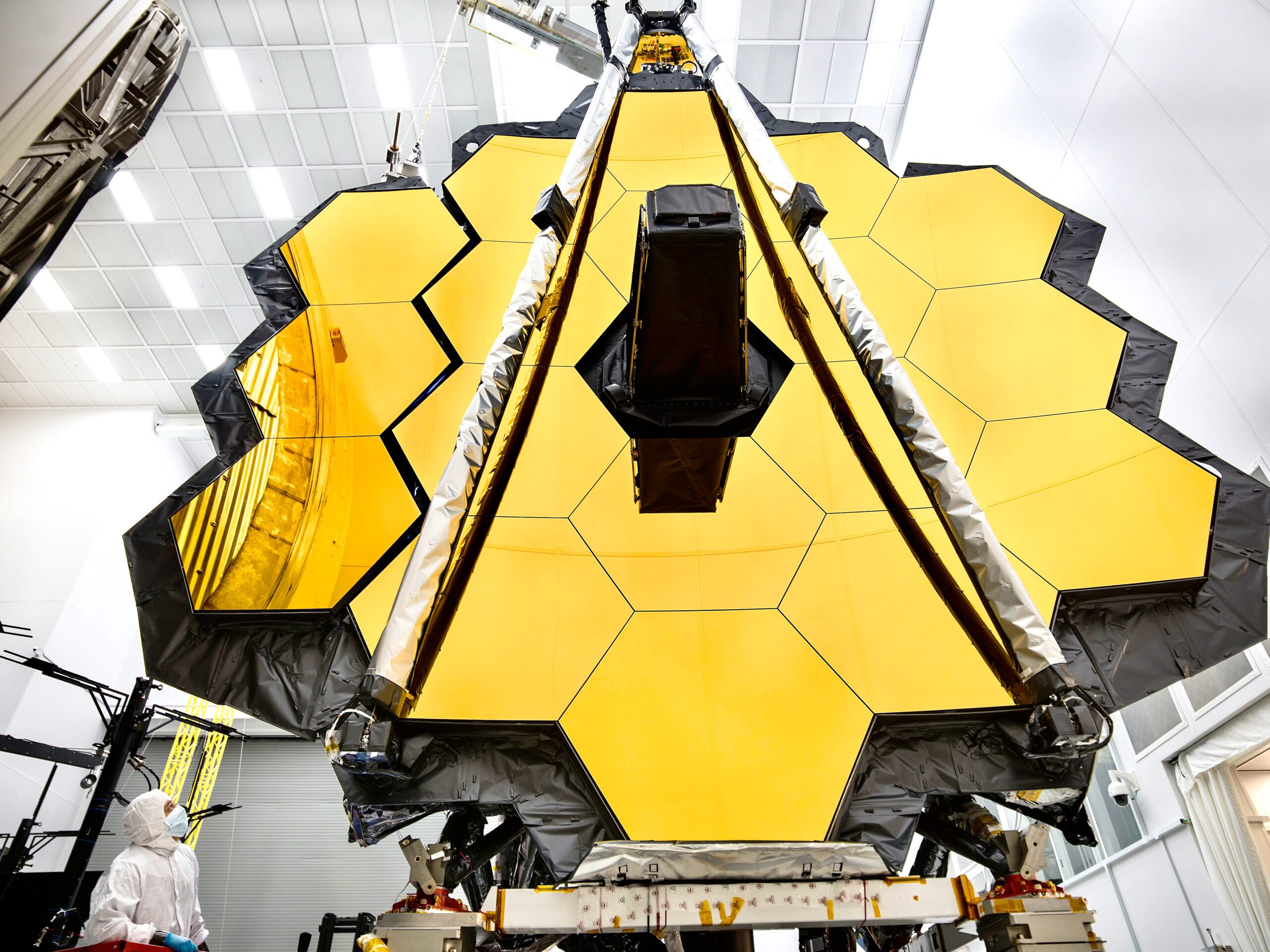Stay Up to Date
Submit your email address to receive the latest industry and Aerospace America news.
As development of astronomical instruments goes, the James Webb Space Telescope has been decidedly — pun intended — star-crossed. NASA managers are doing their best to make sure the bad luck does not extend into the home stretch. The spacecraft must be shipped from Northrop Grumman in California, through the Panama Canal and to the Ariane 5 launch site in French Guiana for launch sometime between March and June 2019.
NASA is even accounting for “potential threats from pirates” during the shipping, NASA’s Mike Menzel, the mission systems engineer for Webb, told an audience at the 2018 AIAA SciTech Forum in January. A U.S. Navy escort is being planned.
Last September, NASA announced that Webb’s launch date would slip from October 2018 into 2019. The delay stems from a routine schedule assessment, which identified the need for additional time to wrap up integration and environmental testing of elements of the spacecraft.
The delay is the latest in a string of cost and schedule overruns since Webb’s development began in the 1990s, originally slated for a 2007 launch and a $500 million price. Due to underfunding at times and construction snags, the budget has increased to $8.8 billion.
Though unwelcome news, this new delay might not be all that significant given the scale of the project. NASA estimates the costs of keeping Webb’s corps of scientists and engineers around an extra five to eight months at less than 2 percent of the project’s overall development costs, so around $160 million. Critically, those funds are already available within the existing budget, explains Eric Smith, the Webb program director at NASA Headquarters in Washington, D.C. When crafting Webb’s major budget replan in 2011, managers set aside reserve funds to deal with the all-but-inevitable issues that arise whenever large, complex projects near the finish line. “History would say there’s going to be something that bites you,” says Smith.
In Webb’s case, the holdup centers on the spacecraft’s bus and sunshield, now undergoing integration and testing at Northrop Grumman in Redondo Beach, California. The sunshield will shade Webb from the heat and light of the sun, Earth and moon, so that infrared light emitted by faint, cold, distant phenomena stand out in its observations. During Webb’s launch on an Ariane 5 rocket from French Guiana, the sunshield will be folded up, origami-style, to fit within the fairing — as will the telescope’s 6.5-meter-diameter primary mirror, composed of 18 hexagonal segments.
Then comes what NASA’s Sandra Irish and others refer to as “14 days of terror,” as the telescope is deployed one step at a time, with ground commands rather than through an automated sequence. For the sunshield to unfurl in space to its full tennis-court size, though, 107 membrane release devices will have to actuate. These devices contain a metal wire that melts due to an electrical current, releasing a pin that pulls through the sunshield’s five layers and then allows them to expand. Test deployments of the sunshield at Northrop Grumman will require replacement of the actuators and those swap-ins have taken more time than predicted.
Additional vibration and acoustics tests, mimicking the launch conditions Webb will experience, still loom for when the telescope’s science instruments — currently at NASA’s Johnson Space Center — are wedded to its bus and sunshield. And with some reserve funds now allocated, there is less wiggle room for problems that could pop up.
That said, fears of Webb being derailed are not founded, Smith says. “At this point, you’re testing largely workmanship — have things been put together correctly?” he says.
Alan Boss, a staff scientist at the Carnegie Institution of Washington and a longtime follower of Webb’s development, sees a bright side in the recent delay. Having plenty of time for I&T to “get it right” ultimately “trumps everything else,” says Boss, who is also a member of NASA’s Astrophysics Advisory Committee. The Transiting Exoplanet Survey Satellite, or TESS, pegged for a March 2018 launch, will also have additional time to gather promising, nearby, newfound exoplanets for Webb to scrutinize. Webb will have the light-gathering power to identify cocktails of gases in these worlds’ atmospheres that might indicate the presence of alien life, an ability largely beyond the current generation of telescopes.
When Webb launches, its backers say the telescope will be worth the extra wait. “Webb is going to teach us things that no other science facility or instrument can,” says Smith. For instance, by peering 13.5 billion years back in cosmic time, Webb should also help finally reveal how the first stars and galaxies formed. “We’re coming along with this fantastic facility,” Smith says. “We’re almost there.”
Ben Iannotta contributed from AIAA SciTech.
Editor’s note: The primary mirror on the James Webb Space Telescope is shown in the NASA photo at the top of this page.
About Adam Hadhazy
Adam writes about astrophysics and technology. His work has appeared in Discover and New Scientist magazines.
Related Posts
Stay Up to Date
Submit your email address to receive the latest industry and Aerospace America news.




